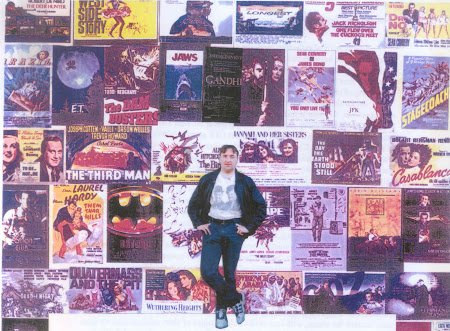This, to put it simply and bluntly, is one of the greatest films ever made. Technically speaking it is also a minor miracle; this also, in an era after the 20th century when films have become less about art and more about processed, manufactured entertainment - and also coming from a nation once noted for its high-speed editing and montage from the likes of Sergei Eisenstein.
Russian Ark by contrast, is a film made all in one shot (more or less), for 99 minutes.There have been many experiments over the decades of a continuous form of film without editing, where the camera is not static and moves around locations following characters in one continuous movement. Alfred Hitchcock took a fancy to the gimmick in 1948 with Rope, with moving walls so that his camera could track around a single Manhattan apartment (below): the restrictions of only 10 minutes worth of film in the camera led to the "10 minute take", where Hitch cleverly tried to smooth out the transition by ending the reel with the camera going into shadow facing a completely black surface (ie. a character's back, or the infamous chest in which the victim is stored.)
Orson Welles, ever the innovator, tried his hand with a bravura opening sequence of Touch of Evil with the camera tracking around various streets of a California border town. Such a feat could only last up to those precious 10 minutes of film - plus a considerable amount of dexterity from the crew. In recent years, there have also been subsequent experiments at "real time" filming, in the likes of Birdman or 1917, reverting to the Hitchcock trick of subtle transitions when the camera is obscured.
It was the coming of digital technology however, that "freed" director Alexandr Sokurov, once the quality of image had reached film levels, and he was thus able to record almost unlimited minutes of cinematography onto a computer. Shooting in and around the Hermitage Museum in St. Petersburg, he also had the perfect canvas for his camera to prowl around.
But technicalities were only the first hurdle - for this one film has thousands of extras from different centuries, all being filmed in one afternoon, from the 18th century in one scene, then straight to the Stalinist 1940s with the Germans on the brink of conquering Leningrad (as St. Petersburg became known), then back to the time of Catherine the Great (Mariya Kuznetsova), suddenly inconvenienced and in need of urinating somewhere in the snowy palace gardens.
In a medium which has often been equated as having a dream-like quality, this is very much one film as a dream - a hypnotic, nostalgic, compelling one.
Its story, as such, is guided through by an unseen narrator (the voice of Sokurov himself) who greets a European (Sergei Dreiden), based on the Marquis de Custine, who wonders around the world's largest art gallery including the connecting Winter Palace, built in the era of Catherine the Great, and also the residence of the last of the Romanov dynasty - Tsar Nicholas is seen poignantly trying to keep his children under control - before that family's barbaric demise in 1918.
Sokurov clearly yearns for this older, more romantic era when Russia was among those Imperialist countries that very much imported the cultural influence of Western Europe including France and Italy.

I was travelling back through London one February evening, with a local theatre group improv evening to go to, or the option of going to the Renoir cinema in Bloomsbury to see Russian Ark. Time has reassured me that I definitely made the right choice.





No comments:
Post a Comment